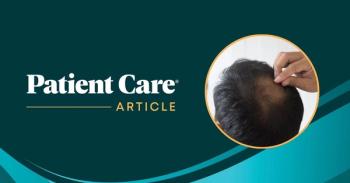
Favre-Racouchot Syndrome
A 67-year-old woman sought medical treatment for the persistent, large “blackheads” on her face. Examination revealed diffusely thickened and yellowed skin with deep furrows. The periorbital and malar areas were studded with large open comedones.
A 67-year-old woman sought medical treatment for the persistent, large “blackheads” on her face. Examination revealed diffusely thickened and yellowed skin with deep furrows. The periorbital and malar areas were studded with large open comedones. This clinical presentation is typical of Favre-Racouchot syndrome.
Drs Charles E. Crutchfield III and Humberto Gallego of St Paul explain that Favre-Racouchot syndrome is an extreme manifestation of actinic or solar elastosis, marked by a degenerative change in the dermis and caused by prolonged sun exposure. It is characterized clinically by yellowish discoloration and histologically by degeneration of elastic fibers; hence, the term “elastosis.” Favre-Racouchot syndrome is solar elastosis in its most pronounced form and causes comedones that slowly grow larger with time and do not disappear spontaneously. If neglected, the comedones can become enormous. Most commonly, men are affected, but as this case illustrates, women are not immune.
Individual lesions may be treated with manual extraction. Long-term use of topical tretinoin, 0.025% every other night at bedtime, can slowly improve the comedones and partially reverse many of the changes of photodamaged skin. If the agent is tolerated, the cream may be applied nightly and its strength gradually titrated to 0.1%. Surgical techniques, such as laser abrasion, can improve the condition dramatically.
Drs Crutchfield and Gallego add that solar precautions must be discussed with the patient, and a complete skin examination needs to be performed to exclude potential skin cancers.
Newsletter
Enhance your clinical practice with the Patient Care newsletter, offering the latest evidence-based guidelines, diagnostic insights, and treatment strategies for primary care physicians.
















































































































































































































































































